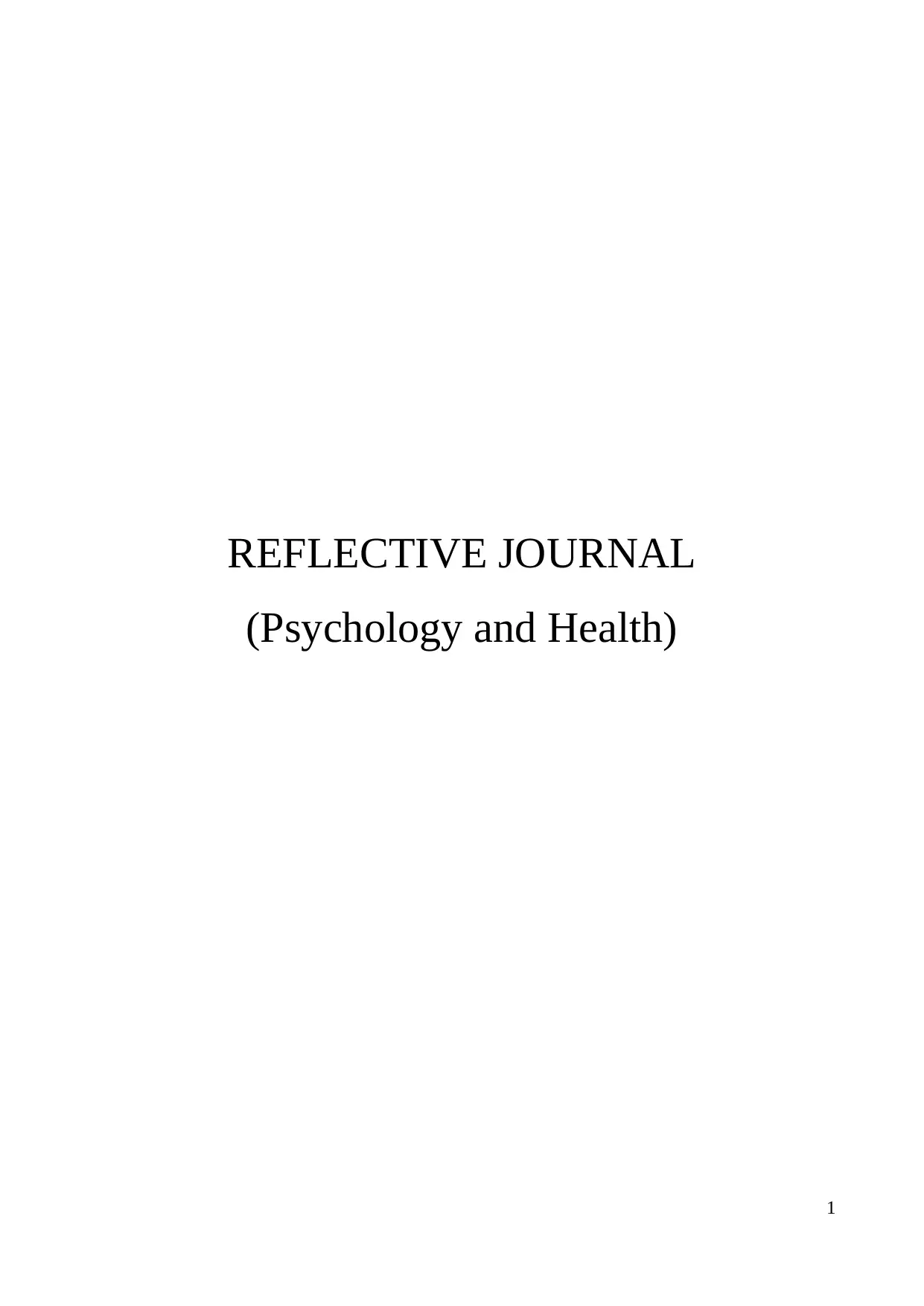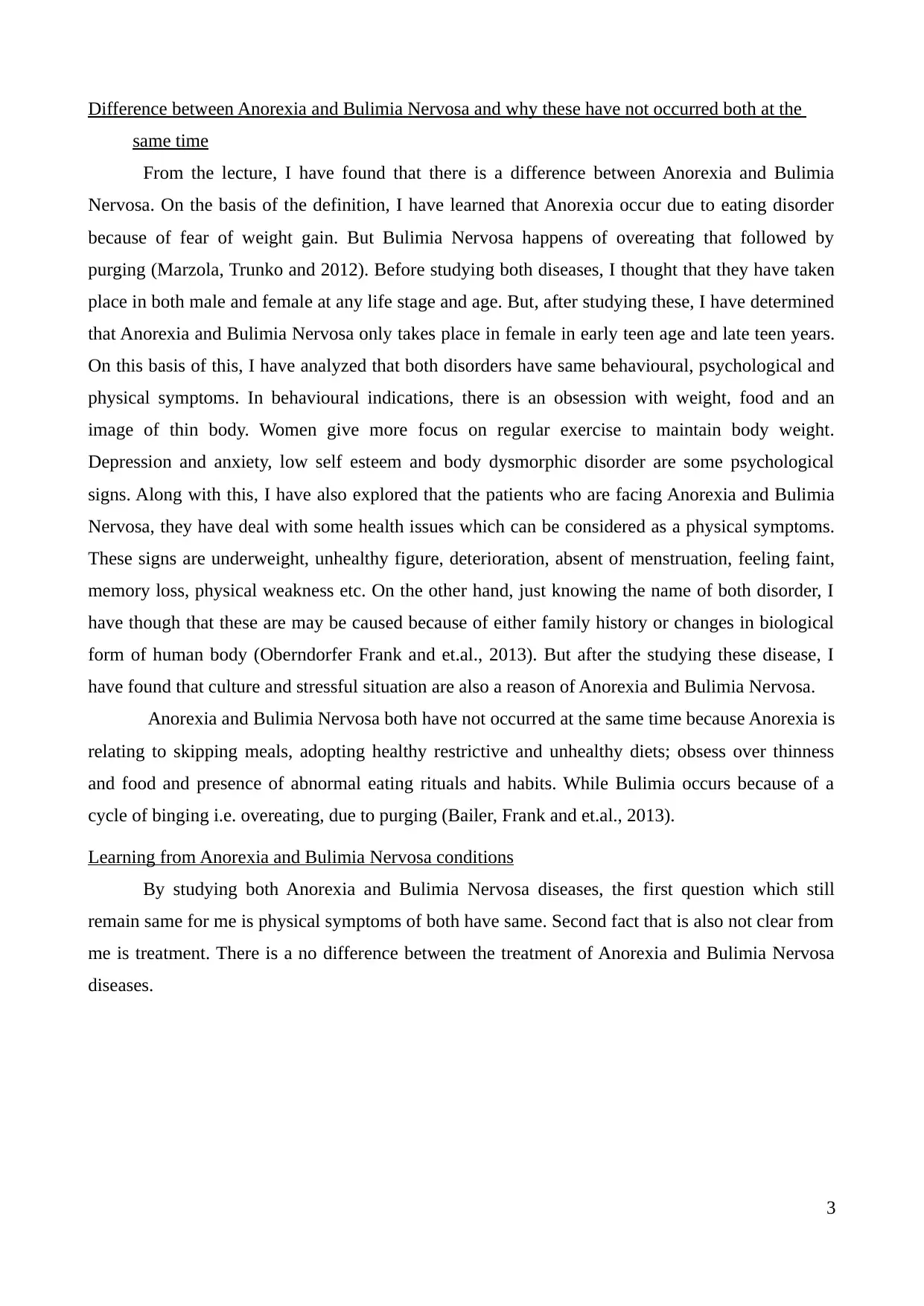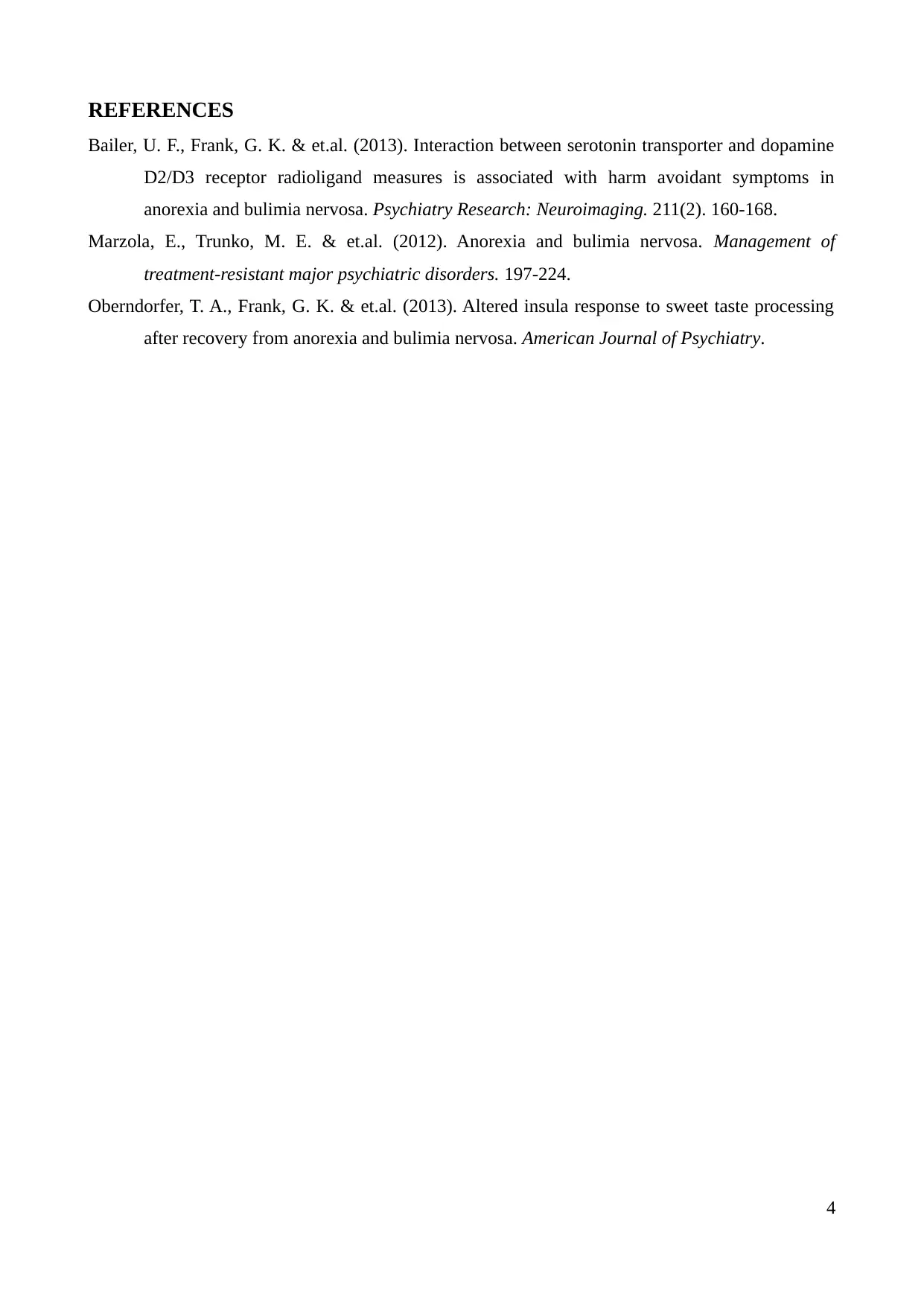Psychology and Health Reflective Journal
VerifiedAdded on 2020/01/28
|4
|609
|89
Journal and Reflective Writing
AI Summary
This reflective journal assignment focuses on Anorexia and Bulimia Nervosa, exploring the differences between these eating disorders. The author discusses the behavioral, psychological, and physical symptoms common to both, noting that they primarily affect females during their teenage years. The journal also examines the reasons why both disorders don't typically occur simultaneously, highlighting the contrasting behaviors of restricting food intake (Anorexia) versus cycles of binging and purging (Bulimia). The author concludes by reflecting on unanswered questions regarding the similarities in physical symptoms and treatment approaches for both conditions. The journal includes references to relevant research articles.
1 out of 4











![[object Object]](/_next/static/media/star-bottom.7253800d.svg)